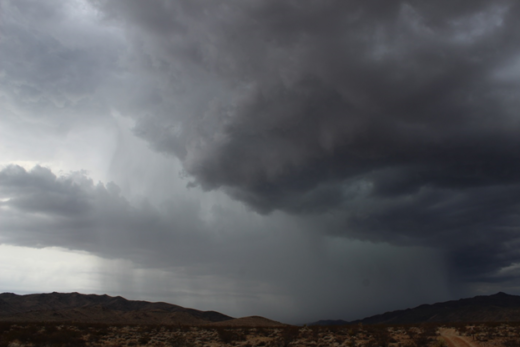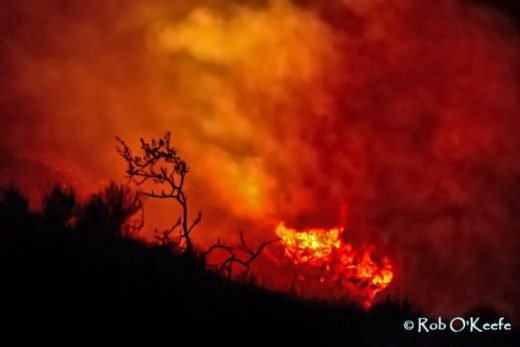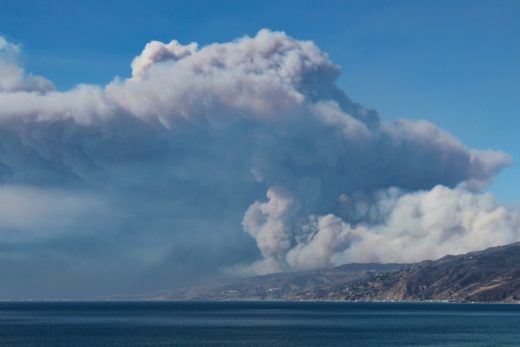By the 1980s, scientists’ had gained a clearer understanding of the role of plate tectonics in distributing rock formations and Earth resources across the globe, especially along past and present plate boundaries. In nearly every region throughout California, you can find evidence in the rocks and landscapes of dynamic plate boundaries that have shifted during hundreds of millions of years of Earth history. That is certainly true in the gold country of our Sierra Nevada foothills.

Several years ago, before taking some students up there for field studies, an exceptional colleague (geologist Cara Thompson) asked me about the geology around Jamestown. Her question got me a little carried away. This sometimes happens when I find some time to wander into the amazing world of natural history and landscape mysteries. So, I will share this edited response by starting with my own observations based on my experiences up there. Here is a summary of the outcrops and geologic history of that region as I oversimplify it from the Central Valley up the Sierra Nevada slopes. If this discussion becomes too much geologic detail for beginners, you might start by viewing the images and consulting Chapters 2 and 3 of our book to build your foundation; if you are looking for more detail, check out the references listed at the end of this discussion.
Sedimentary rocks that underlie the Central Valley have been down-warped, dipping toward the valley, and are often seen outcropping on its edges. However, these outcrops are far more common and dramatic along the west side of the Valley. For your trip, as you travel uphill from the Valley into the Sierra Nevada foothills metamorphic belt, you will notice those headstone-like outcrops rising above the grasslands and oak woodlands. They are often called tombstone or gravestone rocks and when you look at our photos, you can see why.
Metamorphic rocks in this region date back to the Mesozoic subduction zone when rocks from the Pacific Ocean floor were dragged toward the east and plastered against the continent, representing the original sources of the gold. These minerals would then be melted and incorporated into the edge of Mesozoic subduction zone magma chambers. Rich in valuable gold, silver, and other metallic ores, this remaining melt was finally squeezed through cooling cracks, joints, and fractures into the “veins” that would be the last to solidify and contain the gold along these contact zones. These vein-like intrusions can be seen throughout the area in both the metamorphic rocks and along the edges of the granitic batholiths that are mostly farther inland and upstream.
Now, here’s the key to the most interesting geologic features around Jamestown. Before the current Sierra Nevada Mountains were uplifted so high, the headwaters of their drainage basins extended much farther east into the Basin and Range. These gold-bearing outcrops were weathered and eroded west and deposited into ancient streams and rivers all the way to the Central Valley. These Tertiary deposits (with the gold) were then covered with lava flows from volcanic eruptions that also flowed west, following the path of those ancient streams and rivers. Dating shows that some of these rocks were still being deposited as recently as 9-10 million years ago, showing that today’s Sierra Nevada have been uplifted more than six thousand feet higher in that short time.
Differential weathering and erosion since has scoured the softer sediments that weren’t covered by lava flows in the stream beds and left the lava flows sticking up as the highest features in that area, creating their famous inverted stream canyons. Miners figured out that the lava capped those Tertiary gold-rich deposits and would dig through them (either by removing the lava stones and using them for building materials, or tunneling under the lava layers) to access the Tertiary gold deposits. What an interesting story of geologic history and human interaction!
You find this inverted topography in other Sierra Nevada stream canyons and hillsides such as north of Sacramento. Around what is now Oroville and Chico, the extensive Lovejoy Basalts erupted and flowed across the landscape during the mid-Miocene (more than 14 million years ago), evidently during a period of reversed polarity. We share an image in our photo essay here. This tough tableland erodes more slowly, mainly as chunks of the resistant volcanic rock finally break off after being undermined by the older but weaker sedimentary deposits below them. The tablelands remain standing above today’s surrounding landscapes. Look for the many “table” mountains labelled on your maps.
Moving even farther east and higher, the Sierra Nevada Batholith dominates with all those granitic rocks that crystalized from the Mesozoic magma chamber within the subduction zone. Though there are several different dates, I usually use about 100 million years as a round-off figure to describe when they cooled and crystallized. These granites were more recently uplifted , causing overlying rocks to be eroded away and are now exposed so the Ice Age glaciers could scour them. Even farther up and east are those even older Paleozoic roof pendants, but we are now roaming beyond your Mother Lode field excursion.
Here is an excerpt from a field guide written by another exceptional colleague (Matt Ebiner) at El Camino College, where he mentions Jamestown:
- “We leave Columbia and drive back 8 miles to Jamestown. Along the way we pass a long flat-topped ridge known as a table mountain. This is basalt rock which flowed as lava down an ancient river valley, but through erosion of the surrounding hills (with softer rock) has resulted in a sort of topographical inversion (ridge where there previously was a valley). The basalt cap kept a vast amount of ancient stream gravels in place, providing miners with more potentially rich pickings.
- Past Jamestown we go south on Hwy 49 to Hwy 108 where we head towards Oakdale. We go south (left) on LaGrange Road (J59) and slowly lose elevation as we leave the Sierra foothills and approach the flat San Joaquin Valley. There are fewer trees as the oak woodland becomes thinner and the grassland more expansive. There is increasing agriculture with grape vines, beehives (the white boxes on the right side of the road), cattle ranches (notice the portable ramps for loading cattle when they are ready to go to the slaughterhouse.”
Below is an excerpt from what was an on-line BLM publication focused mainly on areas north of Jamestown; it also cited some other publications that might be helpful, but it might take some surfing to find it today:
ROADSIDE GEOLOGY AND MINING HISTORY OF THE MOTHER LODE 2008 PART 3: GRASS VALLEY TO WALKER BASIN PLUMAS COPPER BELT by Gregg Wilkerson and David Lawler; U.S. Bureau of Land Management Far West Geoscience Foundation, Buena Vista
“The Smartville, Slate Creek, Lake Combie, Feather River, Shoo Fly and Calaveras Complexes are tectono-stratigraphic units of similar (but not identical) age. They are separate terrane blocks representing material from different parts of the ancestral Pacific Ocean which subducted and accreted to the North American Craton from Triassic to Miocene time. The Big Bend-Wolf Creek Fault Zone merges into the Bear Valley Fault south of Auburn. The Melones continues southward through the mining districts of Greenville, Garden Valley, Placerville, Plymouth, Amador, Sutter Creek, Jackson, Carson Hill, Jamestown, Coulterville and Mariposa.”
Here are some field guides (available through 2018) that will help with specifics:
- table mountain volcanics around Jamestown
- field guide and summary that includes around Jamestown
- geology field guide of the aforementioned region
- general landmarks and points of interest around Jamestown
Books and Research Articles:
- Allgood, G.M., 1990, Geology and operations at the Jamestown mine, Sonora Mining Corporation, California, in Landefeld, L.A., and Snow, G.G., eds., Guide to Yosemite and the Mother Lode gold belt: Geology, tectonics, and the evolution of hydrothermal fluids in the Sierra Nevada of California: Pacific Section, American Association of Petroleum Geologists, Guidebook 68, p.147-154.
- Allgood, G.M., 1990, The Jamestown mine–Its history, geology and operations: Society for Mining, Metallurgy, and Exploration, Inc., Preprint Number 90-400, 8 p.
- Alt, David, and Donald W. Hyndman. 2000. Roadside Geology of Northern and Central California. Missoula, Montana: Mountain Press Publishing Company
- Dohms, P.H., R.D. Hoagland and G.M. Allgood, 1984, Geology of the Jamestown mine area, Mother Lode gold belt, Tuolumne County, California: Unpublished report and fieldtrip handout, 6 p., maps and sections, scales 1:1,200, 1:600.
- Harden, Deborah R. 2004, California Geology. Upper Saddle River, NJ: Prentice Hall, 2nd e.
- Haydock-West, M.D., 1988?, Mineralogy and petrogenesis of dikes associated with the Mother Lode gold-quartz vein, Harvard mine, Jamestown, California: California State Polytechnic University, Pomona, unpublished senior thesis, 42 p.
The following images serve as an introductory field guide to illustrate many of the rock formations discussed in our article.
















